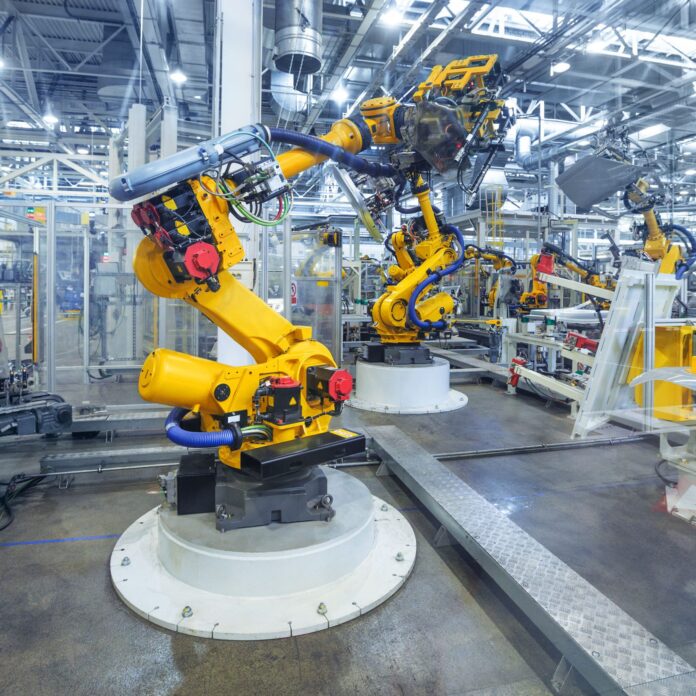Digital-twin technology is increasingly being adopted in multiple verticals, with the industry close to a maturity point, Dan Isaacs, CTO of the Digital Twin Consortium, said during a presentation at the 5G Manufacturing Forum—available on demand here.
“We’ve seen the evolution of digital twins going across from having its origination in the aerospace and manufacturing sectors, but it’s really accelerating across every major industry,” Isaacs said.
The executive noted that there is an increasing adoption of digital twins in industries such as aerospace, automotive, construction, transportation, fintech, energy, manufacturing, healthcare, pharmaceutical and security.
The executive noted that the Digital Twin Consortium was formed two and a half years ago with Microsoft, Dell, Ansys and LendLease, among the founding members. “And we’ve continued to build out our steering committee across these different areas. So you can see Johnson Controls coming in, you can see also GE Digital and Northrop Grumman. We continue to build out, and we’re actually going to be announcing a major oil and gas company coming in the next in the next coming months. We continue to see the value that digital twins are providing across virtually every industry.”
By the end of this year, the consortium aims to have a regional branch organizer in every major continent of the world, Isaacs said. “We now have associations, consortiums and other groups where we can now build out and extend further the ecosystem of digital twin and enabling technologies (…) This consortium really has ties around the world so we can extend and really drive not just the awareness, but the adoption of digital twins.”
Commenting on the different use cases enabled by digital twin technology in different industries, Isaacs said that some of the key use cases include long-haul Covid-19 management, bio-mimicry in life science, buildings as batteries, health assurance buildings, emergency services, water management, carbon sequestration, wind farm operation, industrial automation, AI real-time quality control, supply chain composability, intelligent transport, smart corridors, fleet charging stations and financial transactions, among others.
Isaacs also highlighted a digital twin use case enabled by Vicomtech, a technological center specializing in artificial intelligence, visual computing and interaction based in Spain.
The executive highlighted that the solution includes an ERP system which sends the order to a Manufacturing Execution System (MES). The MES launches the manufacturing process, including a conveyer that moves parts and a remote-controlled robot. A remote operator decides if the part is valid, viewing a live camera image over 5G, and the robot finishes the manufacturing process. Also, a Data Acquisition Module communicates with the elements of the manufacturing line to store relevant traceability and process data at a High-Performance Computer (HPC). This data feeds an Assets Administration Shell (AAS) based digital representation of the line elements that are the input for the twin. The twin, including the dashboard, is deployed in virtual environment, viewed by AR googles, the executive said.
Issacs explained that the digital twin provides a digital replica of the manufacturing cell, enabling manipulation and quality control inspection of manufacturing cells using virual reality. The digital twin also tracks energy efficiency, performance metrics and maintainability of the manufacturing line.
Other use cases in which digital twins are being implemented are predictive quality and precision control, he added.
“The value that digital twin is providing is looking and understanding and being able to have set points or thresholds where you can have advanced alerts and know that you’re reaching to some point where either the anomalous behavior may occur or there could be some type of failure resulting in unplanned downtime, which cascades and ripples through the entire supply chain,” Isaac said.
Meanwhile, Simon Frumkin, CEO of U.K. firm Freshwave, provided insights on the 5G Integrated Railway Augmented Reality Digital Twin (ARDT) project at St. Pancras International train station in London, in which a consortium of business and organizations created a platform through which rail assets, rolling stock and station control systems are connected via a mobile private network (MPN) to improve efficiency, training and passenger experience.
Funded by Innovate UK and led by Pauley, the project involved close collaboration between HS1, Network Rail High Speed, the University of Sheffield Advanced Manufacturing Research Center, Athonet and Freshwave.
“We delivered to our client, Network Rail, a number of different use cases including fault diagnosis, helping them to understand data, but also to understand passenger flows,” Frumkin said.
Freshwave provided the radio coverage plan, network build services, cloud core hardware and operations support in close partnership with Athonet who provided the network design, 5G core software and network equipment.
“I don’t think there’s any way that a digital twin of this complexity could be delivered on any legacy technology. 5G private network is almost certainly the only type of wireless network it could be,” he added.

